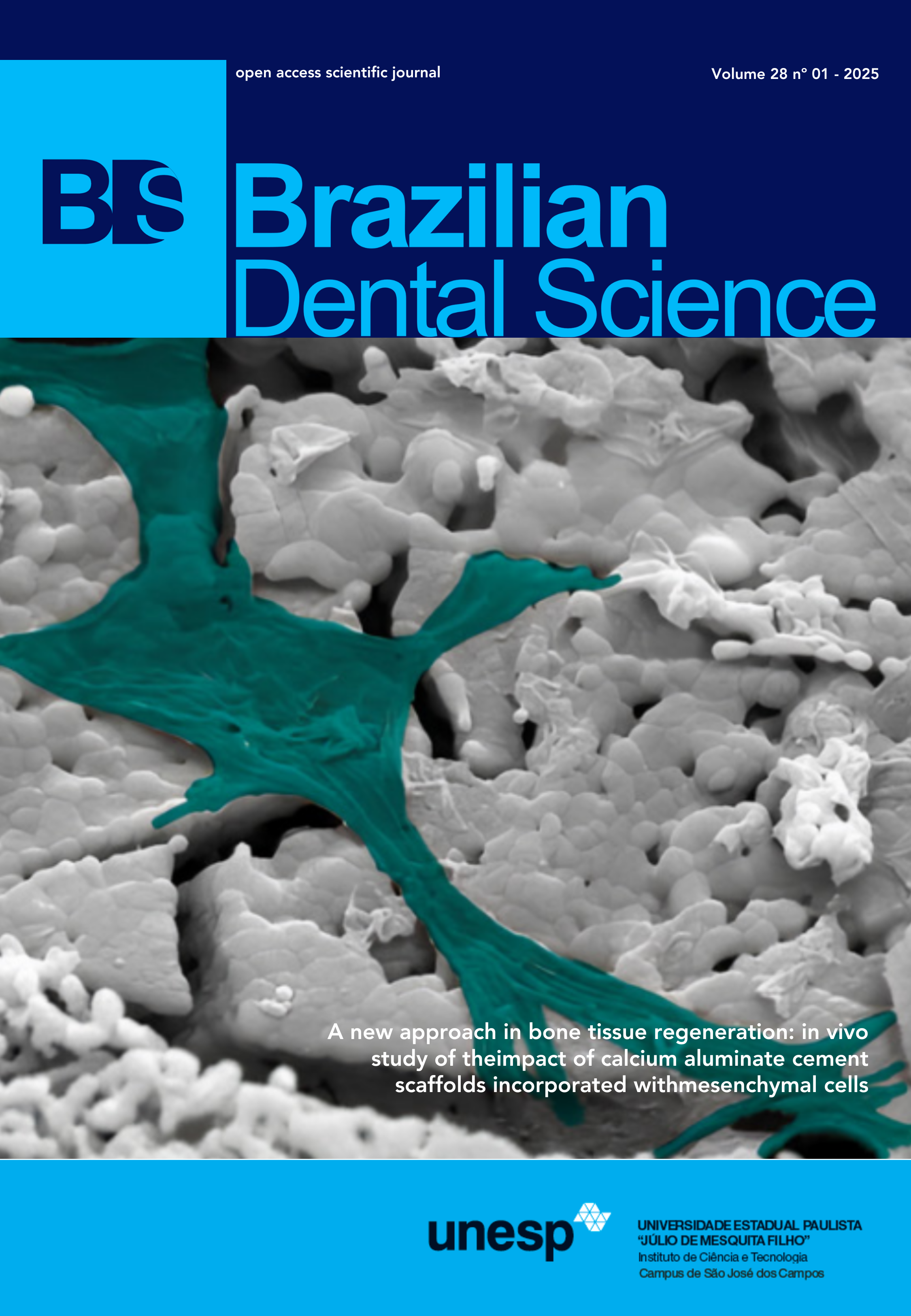Physicochemical properties analysis of experimental retrograde filling materials
DOI:
https://doi.org/10.4322/bds.2025.e4277Abstract
Objetive: To evaluate radiopacity, setting time, flowability, pH, ions release and volumetric change of four experimental endodontic repair cements, MTA white and MTA Repair HP Angelus. The experimental tricalcium cement groups were composed of zirconia oxide or calcium tungstate as a radiopacifier associated to calcium phosphate, the vehicle tested composed by 80% distilled water and 20% arnica extract. Also, the other two experimental consisted of an association of polydimethylsiloxane to tricalcium silicate and same radiopacifiers. Material and Methods: Radiopacity, flow, and setting time tests were done according to ISO 6876 and ASTM C266/2008 specifications. pH was determined with a calibrated pH meter. The ions calcium release was carried out by an atomic absorption spectrophotometer. Volumetric change was assessed by micro-computed tomographic imaging before and after 28 days of immersion in ultrapure water. One-way ANOVA followed by Tukey’s test (alpha=0.05) was performed for pH, setting time and flow rate. Kruskal-Wallis test, followed by Dunn’s test (alpha=0.05), were performed for radiopacity, ions release and volumetric change. Results: All experimental cements presented radiopacity above 3 mm/Al (p < 0.05). Polydimethylsiloxane experimentals showed a higher flow rate (p < 0.05) and better dimensional stability (p < 0.05). Calcium silicate cements resulted in more favorable properties such as alkalinization, longer working time and higher ions release (p < 0.05), though more significant volumetric loss. Conclusion: polydimethylsiloxane experimental cements presented greater flow and dimensional stability, the addition of tricalcium silicate was not able to enhance calcium release nor perform a favorable pH.
KEYWORDS
Dental cements; Endodontics; Root repair; Tricalcium silicate; X-ray microtomography.
Downloads
Published
How to Cite
Issue
Section
License
Copyright (c) 2025 Brazilian Dental Science

This work is licensed under a Creative Commons Attribution 4.0 International License.
Brazilian Dental Science uses the Creative Commons (CC-BY 4.0) license, thus preserving the integrity of articles in an open access environment. The journal allows the author to retain publishing rights without restrictions.
=================




























